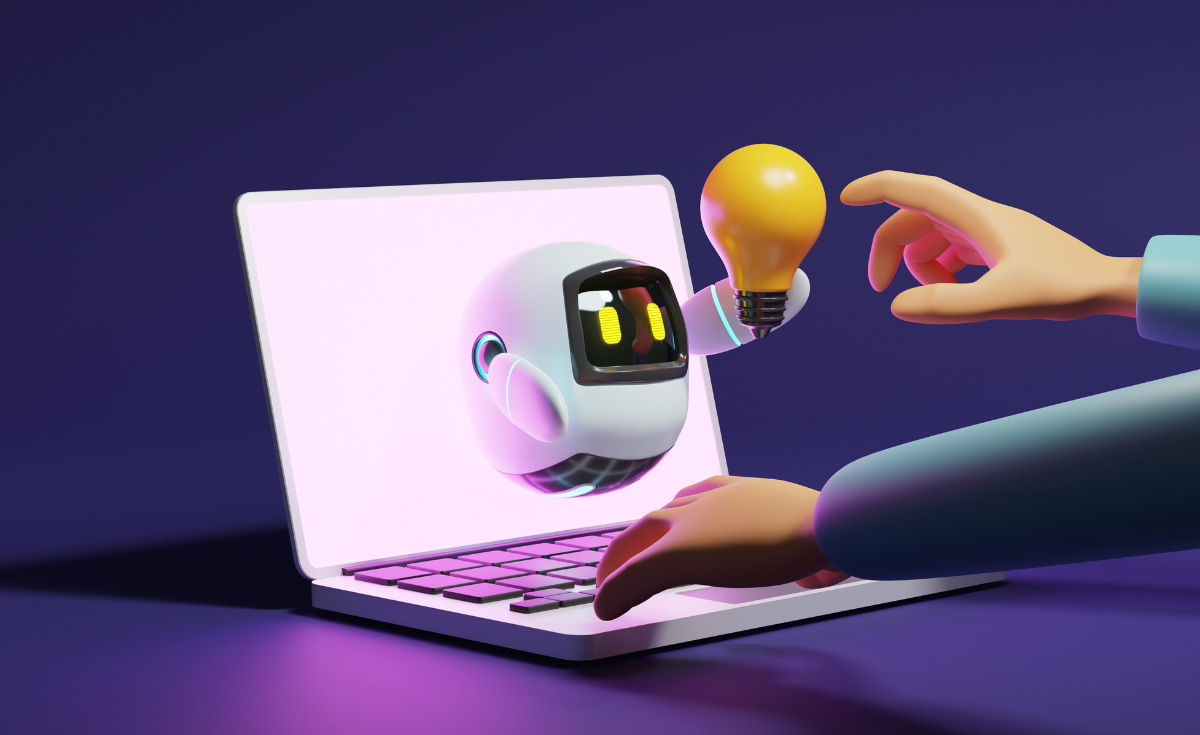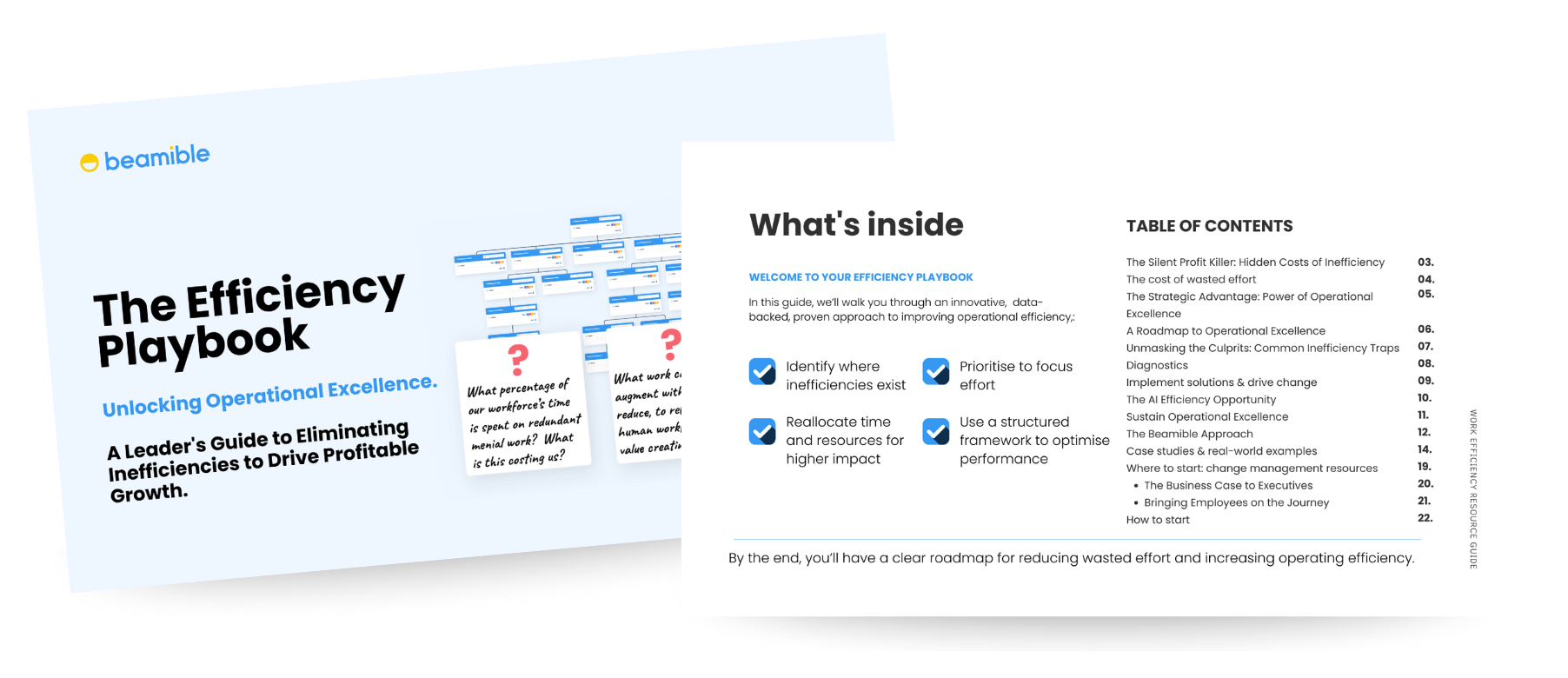Introduction
The future of work is full of change, and large companies are navigating a mix of new technologies, hybrid work models, and shifting employee expectations. Recently, Beamible hosted a panel that shared strategies for making these transitions as smooth as possible. Here’s a look at some of the key insights and how companies can put them into action.
Building an Effective Hybrid Model
Hybrid work is here to stay, but making it work takes planning. Clear guidelines help prevent misunderstandings and keep things running smoothly. For example, setting specific in-office days for each team helps everyone know when they’re expected on-site and when they can work from home. “Hybrid models work best when there’s structure,” said Steph. “A well-organised hybrid model improves productivity compared to a loose, manager-by-manager approach.”
Key Trends Shaping the Future of Work
1. Shifting Focus to Productivity
When introducing AI, the goal should be to make work easier, not to replace people. AI is great for taking on repetitive tasks, letting employees spend more time on projects that make a bigger impact. “Instead of replacing roles, AI is a tool for making teams proactive,” said Sarah Kruger, CPO and Human Capital Strategy Specialist. “When we focus on productivity first, morale improves too.” By keeping employees engaged in the process, organisations build trust and create a positive impact on morale.
2. Enhancing Resilience and Engagement
Engagement has become a top priority because it’s a strong predictor of productivity and retention. Companies that prioritise mental health resources, balanced workloads, and growth opportunities see stronger, more resilient teams. “Employee engagement questions are now about what energises you, not just workload,” noted Steph. “Companies are getting proactive in managing burnout.” Employees who feel valued and supported are more likely to stay engaged and handle changes effectively.
3. Adapting Organisational Models Regularly
Restructuring used to happen once every decade. Now, it’s much more frequent, especially as companies try to keep up with industry changes and employee expectations. To make these shifts effective, companies should involve employees in the process. “If your team knows you’re listening, they’re more likely to support changes,” said Vic, Co-CEO of Beamible. “We need an employee-centred approach to rethinking work models.”
AI’s Role in the Workplace
The potential of AI to transform the workplace is clear, but how it’s introduced makes all the difference. While AI can boost productivity by taking over repetitive tasks, it also raises questions about job security, employee engagement, and trust. To make AI work for everyone, organisations need a strategy that centres on helping—not replacing—employees.
“The focus should be on augmentation, not pure automation,” said Sarah, a panellist in the recent Beamible webinar. “AI should help people do their jobs better, not take their place.”
1. Use AI to Boost Productivity, Not Replace People
AI works best when it takes on routine, time-consuming tasks that can free employees for more meaningful work. For instance, automating administrative tasks like data entry or scheduling can give teams more time for creative, strategic, or client-facing work. When employees are free from the “busy work,” they can better focus on projects that deliver real value to the organisation.
Sarah highlighted how organisations that lead with productivity, rather than cost-cutting, see stronger morale and engagement. “It’s not about replacing roles—it’s about using AI to help people in those roles work more effectively. The goal is to help teams be proactive, not just react to cost-cutting,” she explained.
2. Start Small and Measure Impact
To ensure AI is enhancing productivity without overwhelming or disrupting workflows, start by automating smaller tasks, then assess the results. This step-by-step approach allows organisations to observe how AI impacts daily work and gives teams time to adjust. If certain AI implementations work well, they can be scaled up gradually, but gathering feedback early on is key.
Beamible’s Co-CEO, Vic, stressed that this process helps refine AI’s role in the organisation: “Companies want to know how AI impacts workforce productivity—how it’s changing the way work is done at every level. When we can measure the impact, we’re better equipped to make meaningful, lasting adjustments.”
3. Create a Transparent AI Integration Plan
For employees to trust AI as a supportive tool, companies need to be open about its purpose and impact. Transparency is crucial; explain which tasks AI will take over, why these tasks were chosen, and how employees will benefit. By sharing the long-term vision, companies can prevent the anxiety or resistance that often accompanies automation.
“The people who do the work every day need to know what to expect from AI,” said Sarah. “When they see how AI actually helps them, employees tend to view it as a tool rather than a threat.”
4. Encourage Employee Feedback on AI
Once AI is in place, gathering feedback from employees on its usefulness and impact will help refine its role. Are certain processes more streamlined? Is the team saving time that can now be redirected to higher-value projects? Are there any unanticipated roadblocks? This feedback loop not only improves AI’s effectiveness but also ensures it’s meeting the needs of the team.
Vic noted that feedback is essential to aligning AI with actual productivity gains: “Understanding how AI is helping (or not helping) the team informs adjustments we can make to fine-tune how AI is used.” Regular check-ins keep the focus on AI’s role as a support tool rather than an obligation.
5. Provide Training and Upskilling Opportunities Alongside AI
With AI automating certain tasks, it’s crucial to provide employees with opportunities to learn new skills. As certain routine responsibilities shift, employees may want training to take on more complex work. Upskilling not only supports employees’ career development but also prepares them to make the most of new technology. Investing in training programs focused on data analysis, AI literacy, and strategic thinking can help employees transition smoothly into roles that use AI effectively.
Conclusion
AI is rapidly changing the workplace, but the goal should be to complement and elevate the work teams are already doing. By approaching AI as a tool for productivity, organisations can ensure it supports employees’ goals and makes a positive impact. When AI integration is transparent, gradual, and backed by training, companies are better equipped to build a future-ready workforce that sees AI as a valuable asset rather than a disruptive force.
🎥 Ready to explore more future-focused strategies? Register to re-watch the full webinar here.





